Succulent Care Tips for Beginners: The Ultimate Guide
Looking to get started with succulents? This guide will walk you through the most important aspects of succulent care so you can grow beautiful succulents inside your home and in your garden.
Succulents are low-maintenance plants but they do have unique needs. Let’s get started!
The best thing about succulents is that there are hundreds if not thousands of varieties to choose from.
You’re bound to find a few favorites and you’ll never get bored with all the options available. Some do best outdoors while some can thrive indoors with enough light.
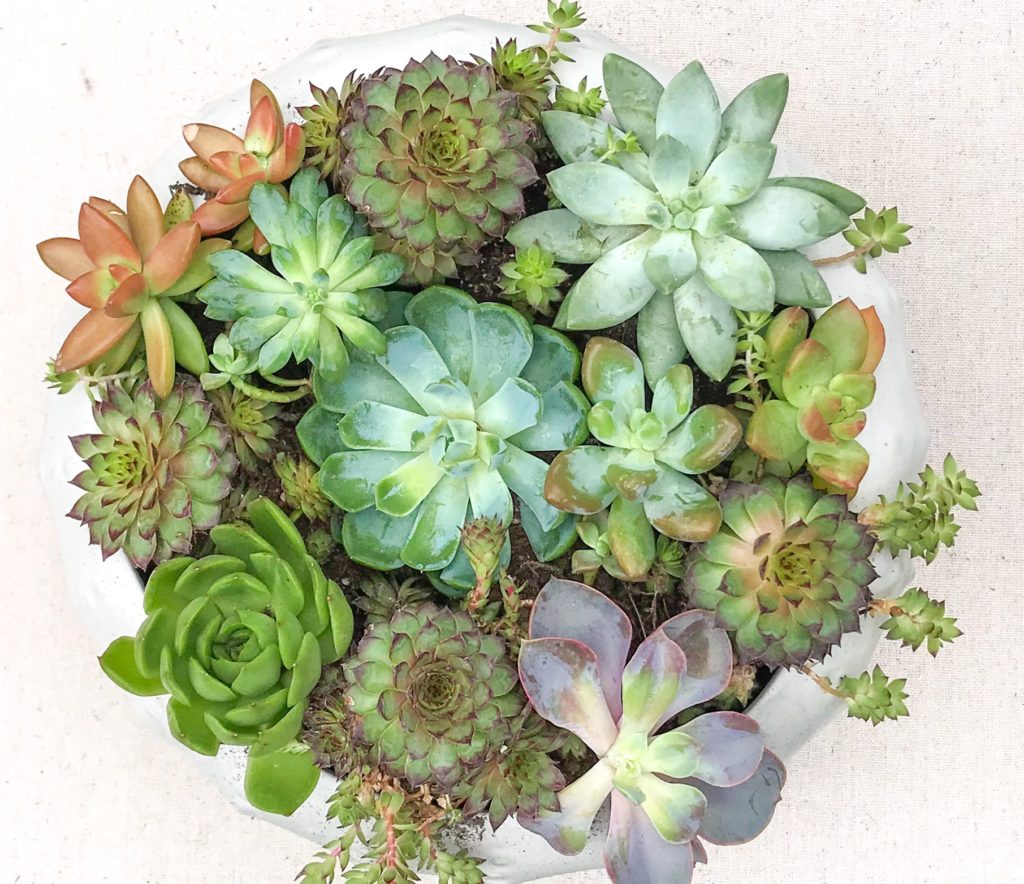
Also, if you’re a creative person, you’ll be inspired by the gorgeous colors and textures of these plants.
You can actually create beautiful DIY crafts with them – just as I did with these DIY pumpkin succulents!
Before getting into the care basics, let’s talk a little bit about what a succulent is and why it matters.
What is a Succulent?
Succulents are unique plants. Put simply, they’re plants that store water in their leaves and stem. This is what allows them to survive long periods of drought out in their native habitat.
They love sunlight but like other plants, can sunburn under intense heat. They’ve become quite popular over the last decades, especially in parts of the country that regularly see several months without rainfall.
You’ve likely heard of popular succulents like the jade plant, snake plant, aloe vera plant, cacti plants, agave, and Christmas cactus. They are all different in appearance but they all store water in their thick leaves.
These fleshy plants have stolen the hearts of many and people often find themselves buying many new plants once they buy their first succulent. They’re that amazing!
The best way to keep succulents, happy, however, is to understand their needs: bright light, well-draining soil, and thorough watering.
(This post may contain affiliate links).
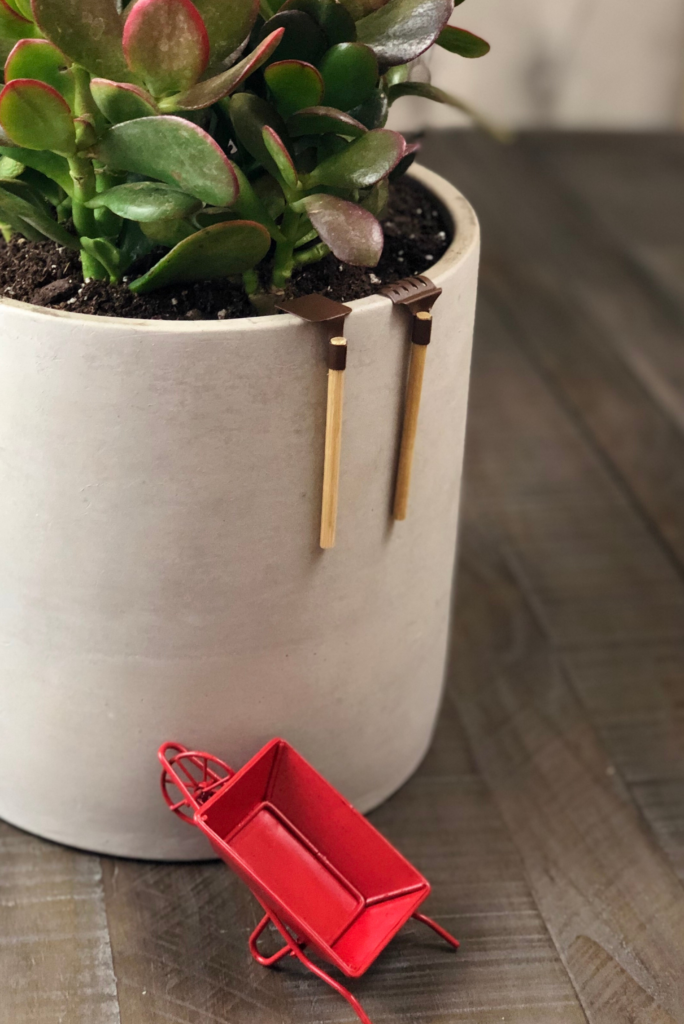
Supplies Needed for Healthy Succulents
Growing succulents doesn’t require a lot of supplies but it does help to have a few ones on hand.
You’ll very basic gardening supplies like:
-watering can
-cactus mix aka succulent soil
-a pot with a drainage hole
-a soil moisture meter (helpful but not required)
Cactus mix is always recommended because this soil is made to be well-draining. It provides the right drainage for succulents to thrive in.
Succulent roots are very susceptible to root rot if overwatered, so using a soil mix that does not hold on to excess water is key to avoiding overwatering.
This is especially important when growing succulents as indoor plants. The soil indoors usually turns out much slower than it would outdoors. This means roots are sitting in moist soil for an extended period of time.
To combat soggy soil, stick to a good cactus mix and make sure your pot has a drainage hole.
I recommend using a soil moisture meter, especially if you’re new to succulents. The meter makes it incredibly easy to know whether you need to water or wait a few more days.
Simply stick the meter into the soil a few inches deep and it will measure how moist the soil is. If it says ‘dry’, then it’s time to water again!
It’s one of my favorite gardening supplies and it comes in handy for all of my indoor plants.
How to Plant Succulents
I’ll keep this brief. Planting succulents is easy: simply take the plant out of the pot and put it into fresh soil. Always make sure that the entire plant sits atop the soil. If you’re planting small succulents, use smaller pots.
If planting larger succulents, use a larger pot that can hold more soil and thus more water.
It’s common advice to wait a few days after planting before you water. The theory is this allows any damaged roots to callus over before taking in any water. This helps prevent root rot.
Whatever your go with, just make sure the entire succulent sits atop the soil: the base of the plant should be visible while the entire root system should be under the soil.
You can use decorative stones or rocks on top of the soil; this is called top dressing. This adds interest and also keeps the soil from drying out too quickly on hot days.
You can skip this step, however, and simply go with a more natural look!
How to Water Succulents Properly
This is the most important step in succulent care.
As mentioned before, succulents are susceptible to root rot if they’re overwatered.
But what exactly do I mean by overwatering? I’ll explain.
I’m not talking about the amount of water you give your plant but the frequency with which you water it.
You WANT to water generously and thoroughly when you water a succulent but you don’t want to water very often.
With your indoor succulents, you need the water in the soil to dry out completely before you water again. The entire pot of soil should be dry.
With your outdoor succulents, you don’t need to wait until the entire pot of soil has gone dry. In fact, it’s better to water outdoor succulents when the first or two inches of soil feel dry.
The difference here between indoor and outdoor succulents is that outdoor succulents need extra help in dealing with extreme temperatures.
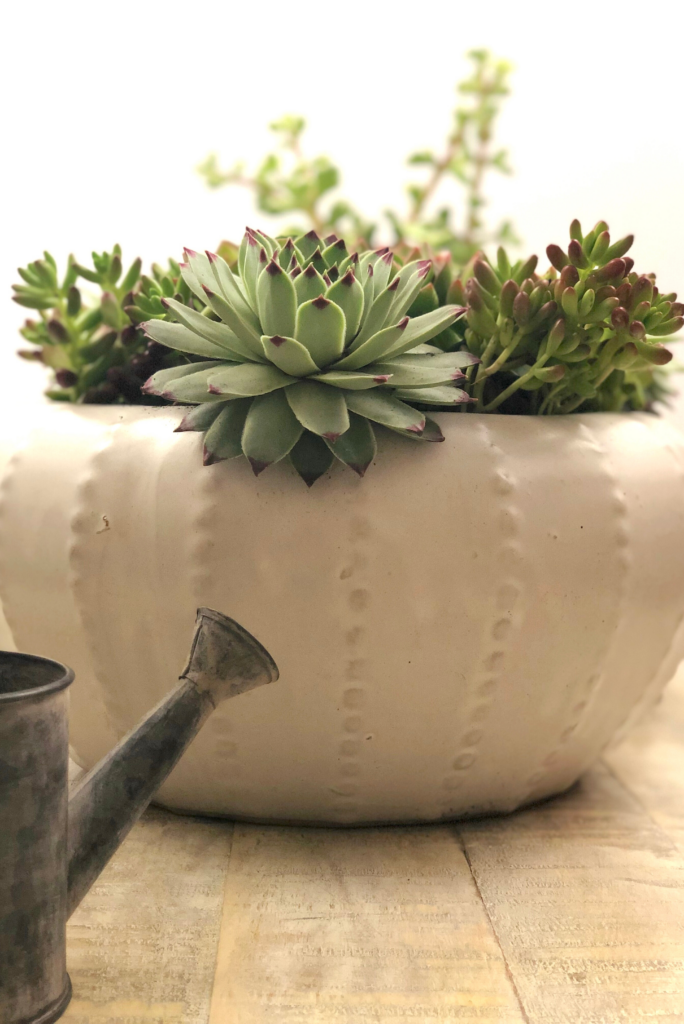
They should be well-watered during times of heat waves or on any days that exceed 90 degrees Fahrenheit.
If you don’t water outdoor succulents in the summer when the topsoil feels dry (preferably in the morning) then you risk things like sunburn, scorched leaves and roots that can’t be revived, and wrinkly leaves.
So keep this in mind: during late spring and summer, water outdoor succulents about every other day. This is usually how long it takes for the soil to dry out under intense heat.
For your indoor succulents, wait until the entire pot is dry but always remember to check daily or every other day. Checking the soil regularly will prevent underwatering. You don’t want to forget to water!
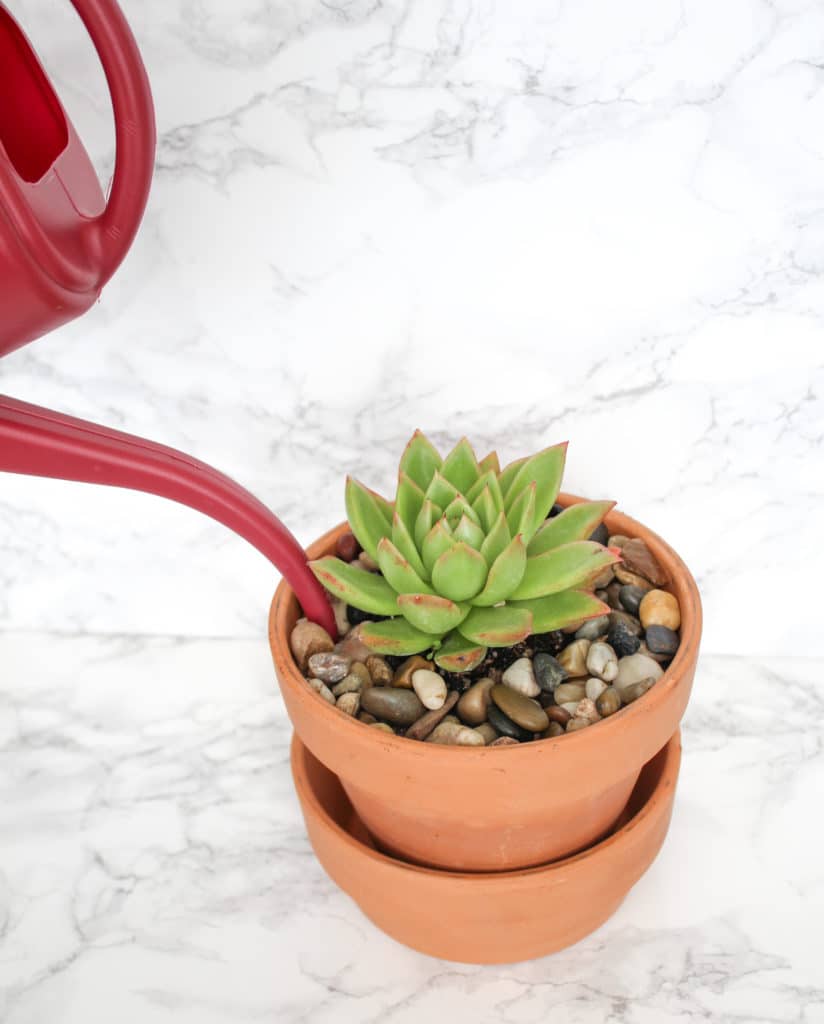
If you see leaves that are wrinkly and feel thin when you squeeze them, you’re likely underwatering. This means you’re not watering your plant often enough.
If you see mushy, yellow, or translucent leaves or fungus gnats flying around the pot, then you’re overwatering. Stop watering until all of the soil is bone-dry, then water again generously until you see water pouring out of the drainage pot.
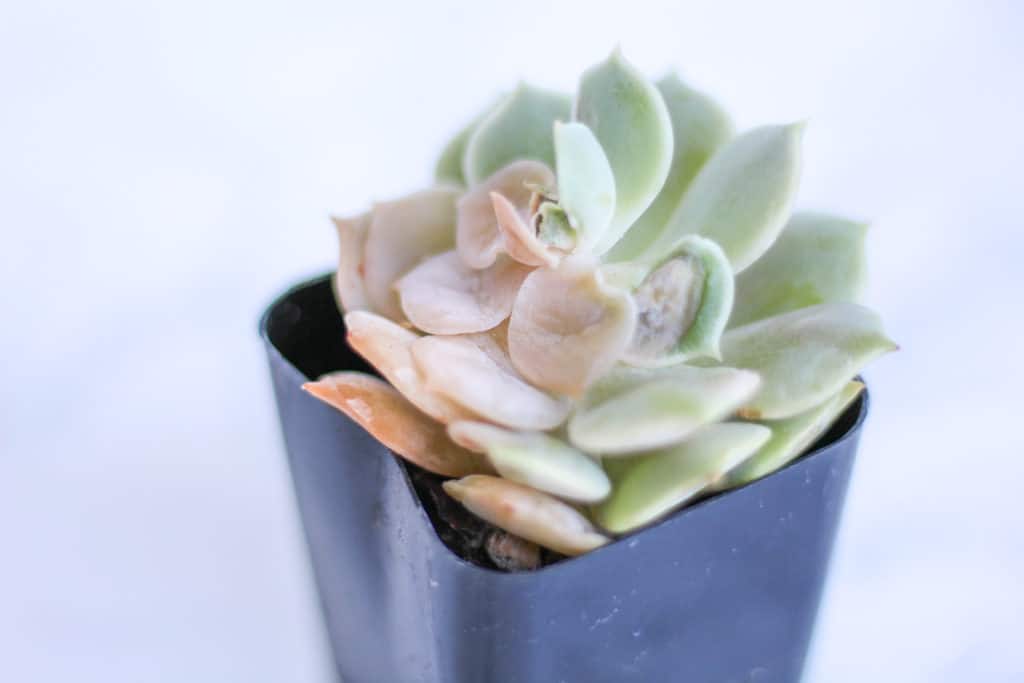
Wait again for complete dryness before watering next.
This is usually referred to as the “soak and dry” method. It’s a method that is used to mimic the dry climates of their natural habitat.
Succulents are drenched in intense rainfall but are then left to a very long time without another drop of water. This is how they learned to store water in their leaves – it’s a survival mechanism.
As long as you have good drainage, don’t be afraid to water your pots thoroughly. Give them a good soaking!
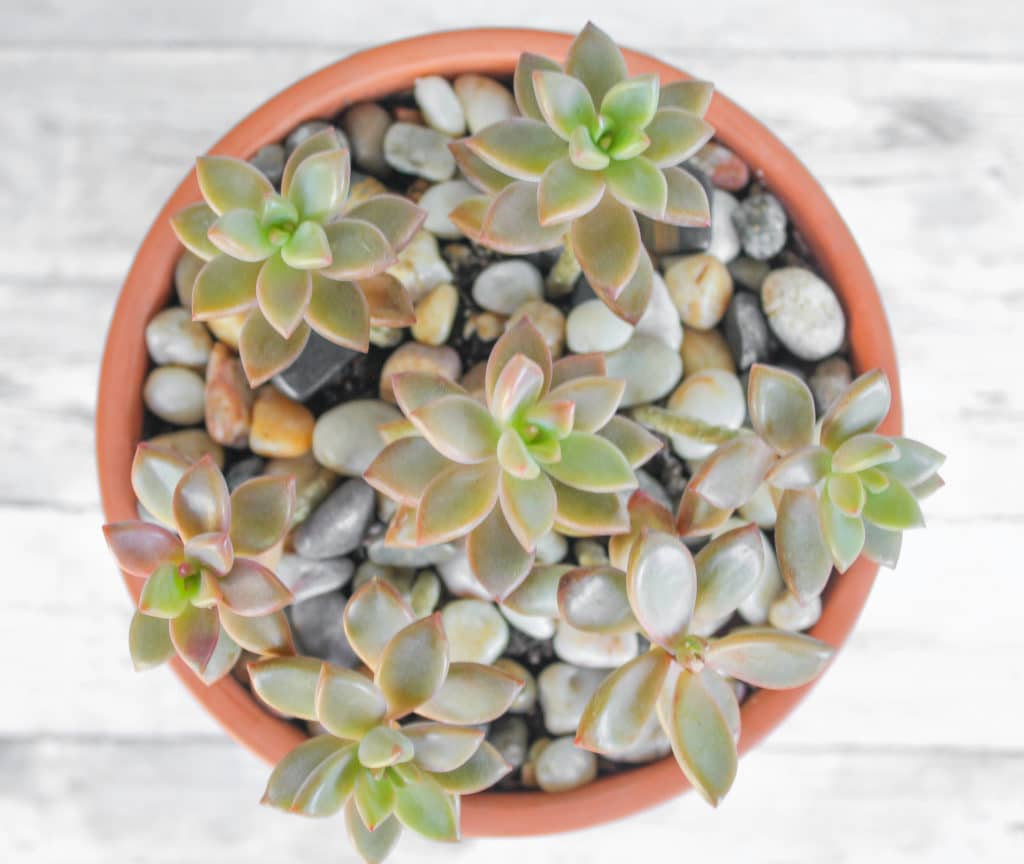
Caring for Outdoor and Indoor succulents
While most succulents are drought-resistant, they actually don’t do well when placed in a full-sun area, particularly during the summer.
This is actually how many people unintentionally kill their plants!
It’s a misconception that all succulents can tolerate long hours of intense heat and full sun.
Succulents need about 6 hours of indirect sunlight each day.
They prefer morning and indirect sunlight to direct afternoon sun, especially if you live in a climate where the temperatures reach above 90 degrees.
Unfortunately, succulents are prone to sunburn if they sit under direct sunlight outdoors for an extended period of time.
It’ best to offer them some protection during hot days – they’ll appreciate some shade.
Remember: if you’re learning how to take care of succulents, then you need to protect them from the blistering sun that can damage their leaves.
Check out this post for a list of the Best Succulents for Full Sun.
Refer to the photo below for an example of what harsh sunlight (above 90 degrees) can do to a succulent.
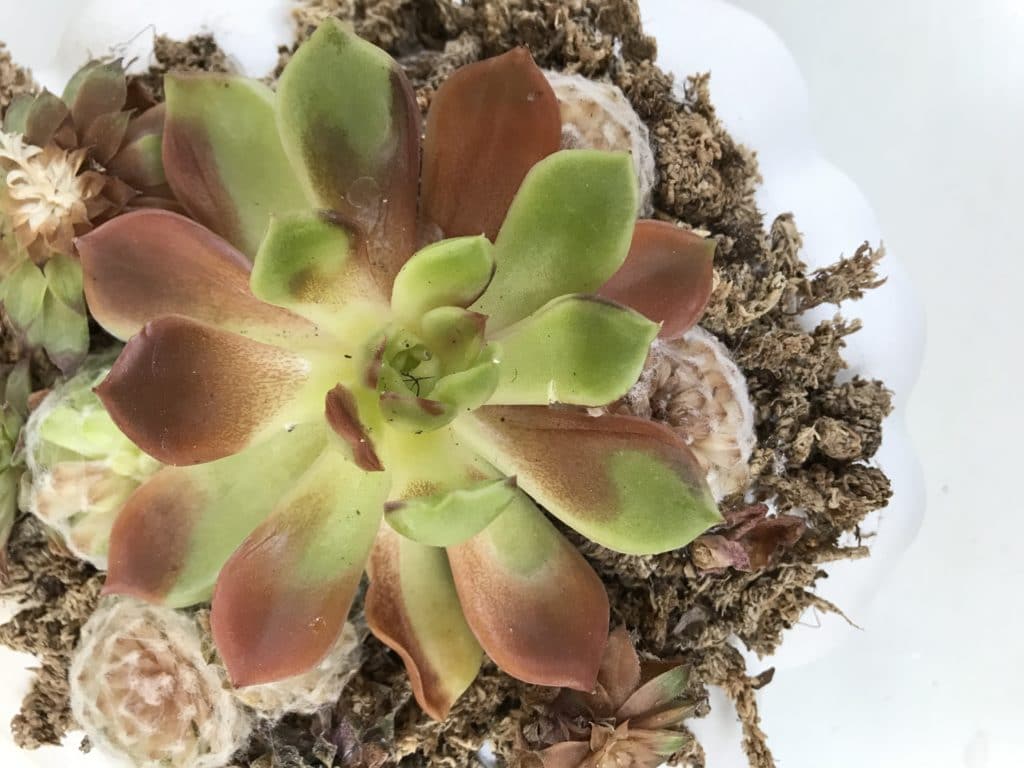
If growing indoor succulents, place them near a window because they’ll need access to indirect sunlight.
If you place them too close to a hot window during the Summer, however, they might burn and dry out too quickly, so keeping them a few inches or a foot away might be best.
Always keep an eye on them to make sure they’re holding up well.
Use Fertilizer Sparingly When Caring for Succulents
Succulents can benefit from fertilizer, but they’re not heavy feeders, which means that fertilizing won’t be the most important step in your succulents care routine.
Most fertilizers that are designed for cacti and succulents contain a healthy amount of nitrogen, phosphorus, and potassium.
These three nutrients help the plant grow and develop healthy stems and leaves. They can even help revitalize a lackluster plant.
Some succulent growers apply fertilizer only once during the active growing season (spring and summer), while others apply it once a month during this time.
You can do either, but NEVER add fertilizer during their dormant season, which for most succulents, is winter.
Only fertilize during their active months when the plant can actually use it to grow.
Plants need plenty of sunlight when given fertilizer.
Good light helps them retain their shape so if they’re growing quickly but without ample sunlight, they’ll stretch out of shape and grow leggy in search of more light.
(For more information on what, how, and when to fertilize succulents, click over to my post here.)
How to Get Rid of Mealybugs on Succulents
You won’t encounter a huge insect problem when growing succulents, but you should still be aware of mealybugs.
Mealybugs on succulents look like white, cotton-like mounds that sit within the leaves and crevices of the plant.
They spread quickly so you’ll need to act fast before they steal the health of your plant.
Fortunately, you can get rid of mealybugs on succulents quite easily and inexpensively.
If you ever see mealybugs on your plant, simply take a Q-tip and dip it into rubbing alcohol.
Swipe away the mealybug with the Q-tip and this should take care of your small infestation. If you experience a larger infestation, head here for a detailed post on getting rid of them.
Pruning: A Fun Part of Succulent Care
Caring for succulents includes dealing with dead, crispy leaves. Don’t worry, though, this is the plant’s natural process and it’s all a part of its growing cycle.
You might even find a few browning leaves on your plant after you purchase them from the garden center. No need to panic!
If the browning leaves are coming from the bottom of the plant, then this is completely normal.
Your plant is simply growing new leaves from the center, so it’s dropping older leaves from its base.
To get rid of these dry leaves, simply tug at them until they break off from the stem, then discard.
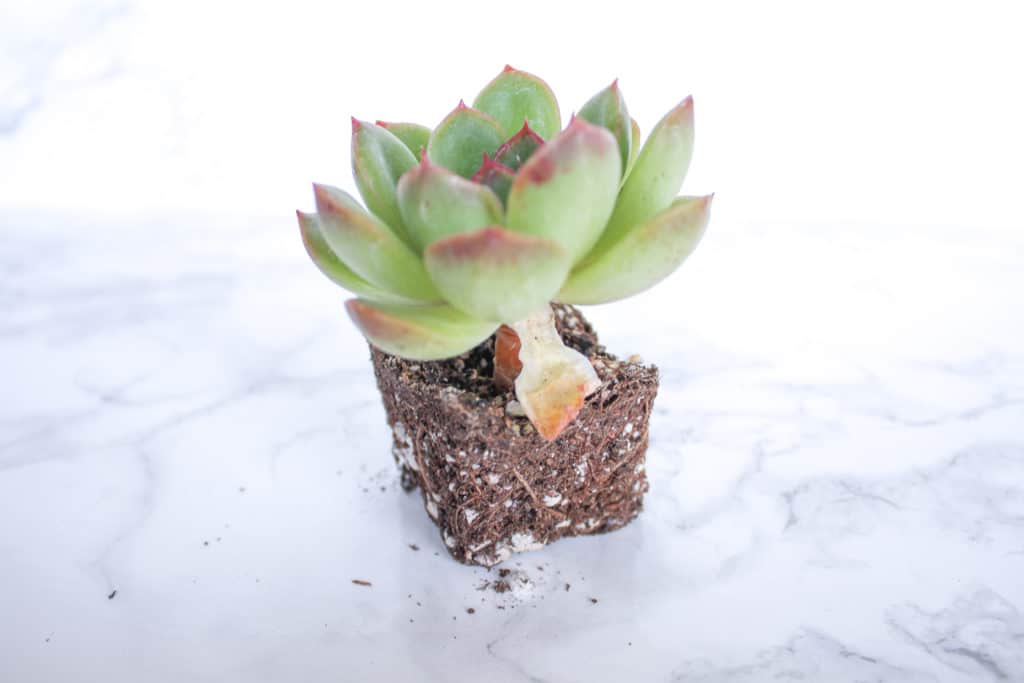
If, however, you find brown, shriveling leaves at the top or middle of your succulent plant, then your succulent is most likely in dire need of water. It’s a major sign of dehydration.
Water your plant thoroughly and water again a few days later once the soil feels dry. Try setting a watering reminder so you don’t forget!
You’ve Now Learned How to Take Care of Succulents!
Now that you’ve read through this guide about succulent care, you can start your own mini succulent garden. Head to your local garden center to pick up a few succulent plants and get started!
Soon, you’ll amass many different types of succulents and cacti for your new garden. Don’t be surprised if you become a full-on succulent enthusiast!
WANT TO REMEMBER THIS? SAVE THIS TUTORIAL ON HOW TO CARE FOR SUCCULENTS TO YOUR FAVORITE PINTEREST BOARD!
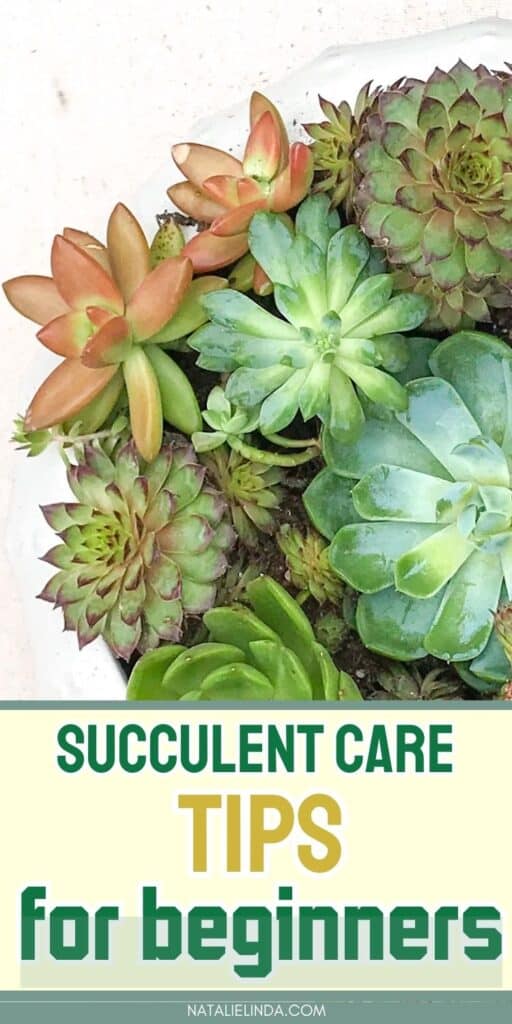
WANT TO LEARN MORE ABOUT SUCCULENTS?
I’ve got you covered with more succulent care posts plus craft posts, too!
Best Full Sun Succulents for a Beautiful Outdoor Garden
How to Water Succulents in Pots Without Drainage
The Best Succulent Plants for Indoors
DIY Succulent Arrangements: Fun and Easy Ideas for Your Home
Why are My Succulent Leaves Shriveling?
Do Succulents Die After Flowering?
How to Make a Fairy Garden Using Succulents
How to Water Succulents
How to Care for a Jade Plant
How to Fertilize Succulents
How to Get Rid of Mealybugs on Succulents
What’s Wrong with My Succulent?
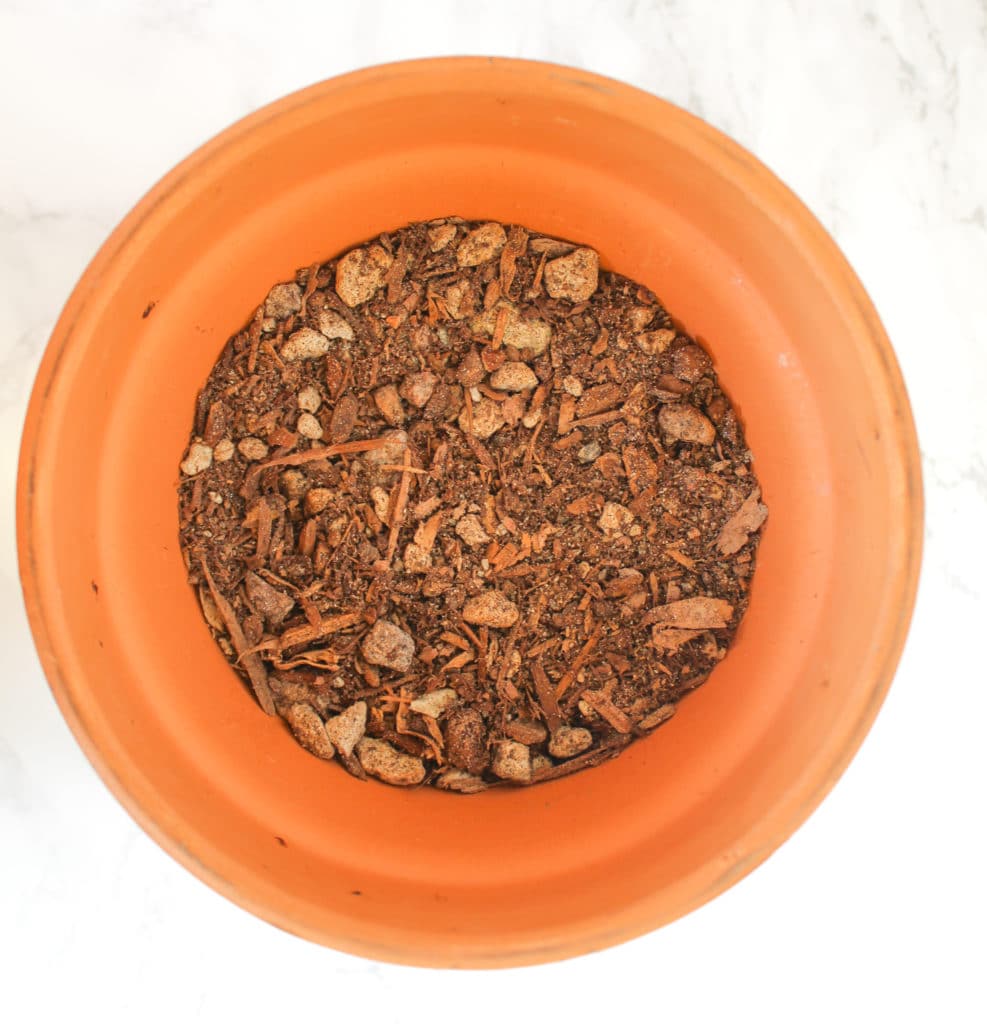
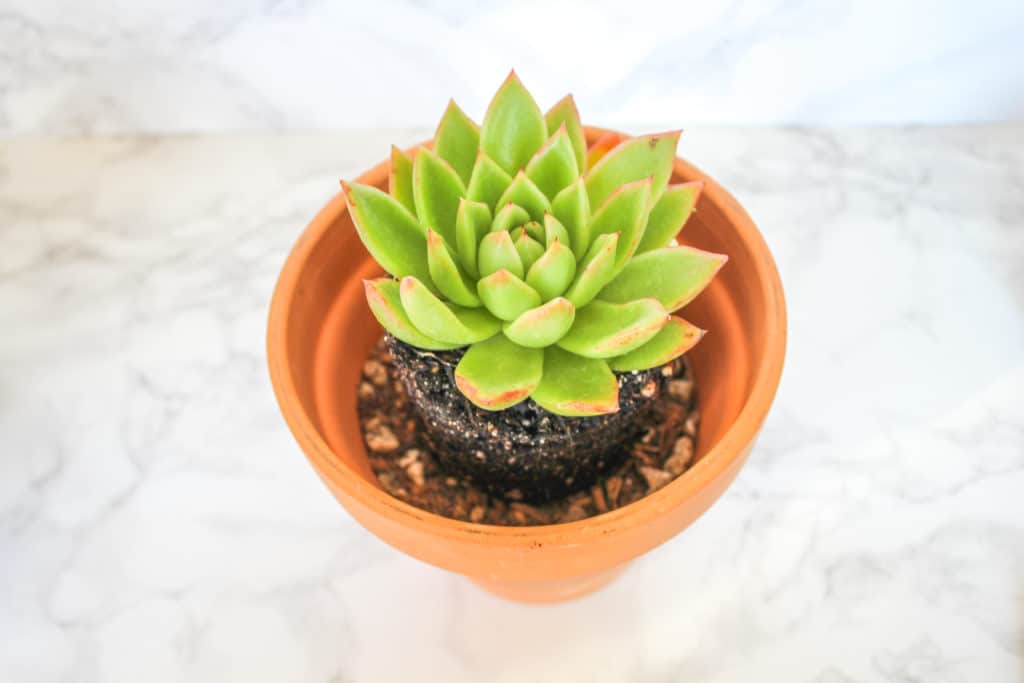
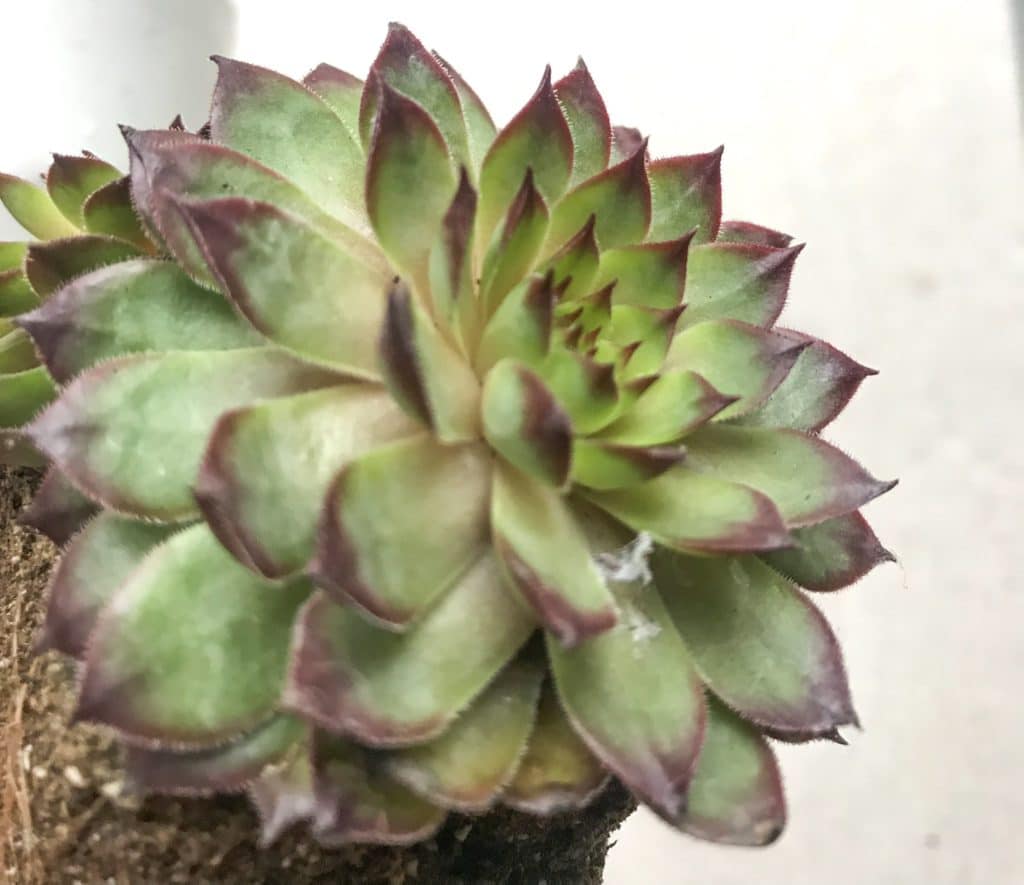
7 Comments
Comments are closed.